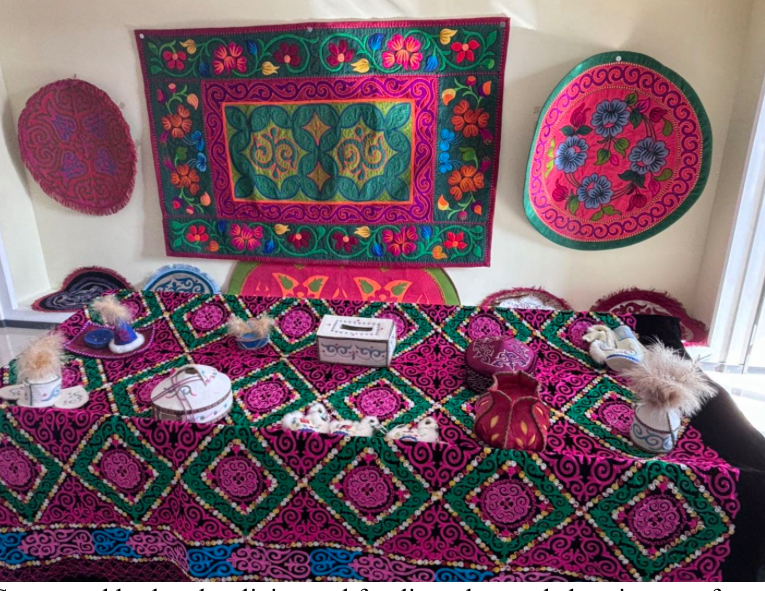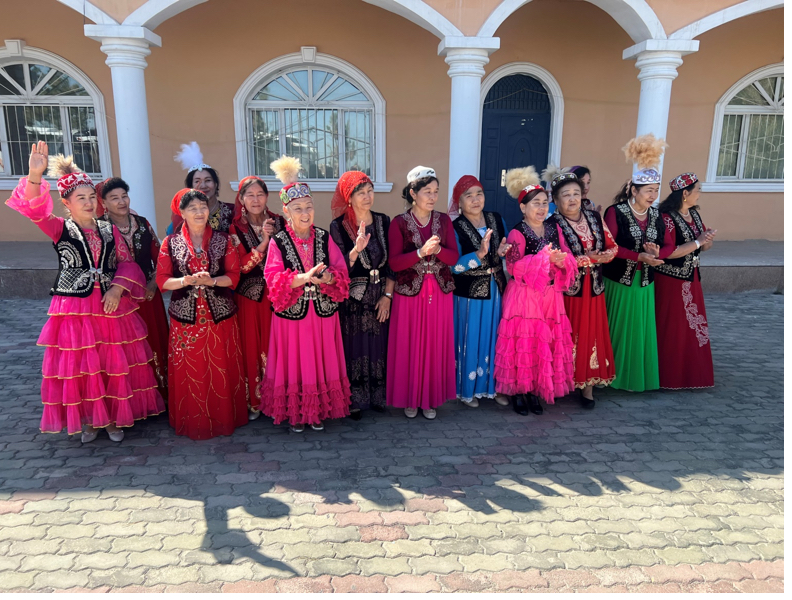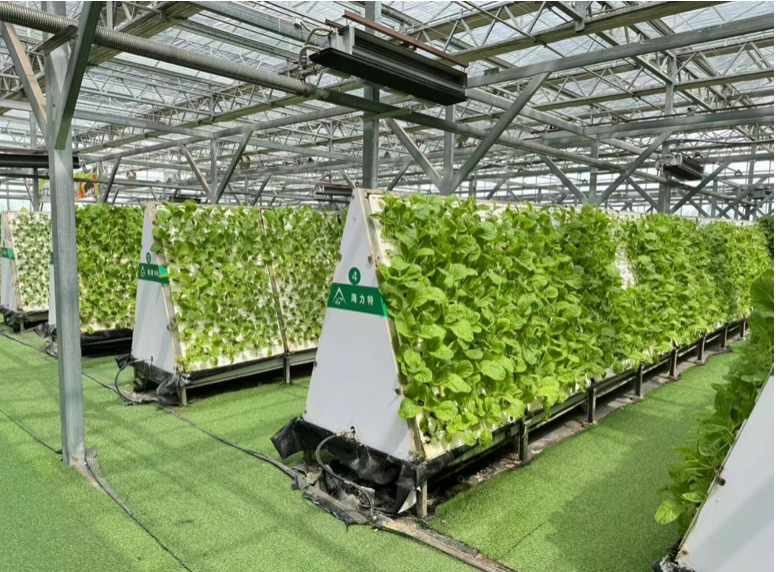Published: October 11,2024
By Zhao Junzhu

More than 100 varieties of tropical plants and 20 types of organic vegetables are grown across 9,000 square meters of smart greenhouses. /courtesy of Swan Homeland
Nestled on the western outskirts of Urumqi, capital of northwest China’s Xinjiang Uygur Autonomous Region, a once quiet ethnic minority settlement is now a flourishing hub where tradition embraces modernity.
Known as Swan Homeland, this small town has undergone remarkable transformation by leveraging traditional ethnic heritage and adopting cutting-edge agricultural practices.
Preserving culture, empowering women
The sound of needles and colorful threads fill a local embroidery workshop run by ethnic Kazakh people in the town. There, Umit Khan Kerman teaches women how to create intricate patterns that represent the local cultural heritage.

Supported by local policies and funding, the workshop is part of a broader effort to empower local ethnic women and diversify the economy. /CGTN
Born in a military family, Umit feels a special connection with soldiers. Over the past 17 years, every November, she makes 300 pairs of embroidered insoles for local soldiers, offering them a glimpse into the rich Kazakh traditions that are alive in her community.
Supported by local policies and funding, the workshop is part of a broader effort to empower local ethnic women and diversify the economy. The workshop has helped over 300 women learn embroidery through training and job creation while offering 50 temporary jobs. These efforts have increased the monthly income of many herder families, providing them with new ways to earn a living while preserving their heritage.

The workshop has helped over 300 women learn embroidery through training and job creation while offering 50 temporary jobs. /CGTN
Zhang Jiajia, a local official in charge of the worker union, told CGTN that this initiative has expanded income opportunities for locals.
Before settling in the area, Umit and her family led a traditional nomadic lifestyle, migrating with the seasons. She recalled the four annual migrations that her family had to make to find pasture for their animals. Winter migrations were especially daunting, often marked by dangerous snowstorms that would frequently block the mountain passes.
In Swan Homeland, she has found stability and new opportunities. Now, she contributes to the community’s cultural economy through her embroidery and runs a rural tourism business, giving visitors a taste of the Kazakh way of life.
Modern agriculture fuels economic growth
Alongside the revival of traditional crafts, Swan Homeland has embraced modern agriculture to drive economic growth.
In 2019, the community’s greenhouse operations were revitalized with the introduction of high-tech cultivation methods. Today, more than 100 varieties of tropical plants and 20 types of organic vegetables are grown across 9,000 square meters of smart greenhouses.
According to Yu Zhixin, another local official, these greenhouses use an innovative mist cultivation technology that delivers nutrients directly to plants, significantly reducing water usage – down to just 1 percent of what traditional farming methods require.

A view of the greenhouse. /courtesy of Swan Homeland
The technology improves land-use efficiency and shortens growth cycles, boosting productivity, Yu said.
“We are expanding the greenhouses by an additional 16,000 square meters to meet the demand for agricultural products in surrounding areas,” Yu said. Once fully operational, the greenhouse project is expected to generate 26 million yuan (about $3.7 million) annually, providing sustainable employment for local ethnic residents.
The method also makes it ideal for the region’s water-scarce, saline-alkaline conditions, according to Yu, who believes the method will be extended to Karamay.
With modern agricultural techniques and traditional Kazakh crafts at its core, Swan Homeland has become a model of rural revitalization in Xinjiang. The community’s blend of cultural preservation and technological innovation offers a blueprint for other rural areas in Xinjiang, demonstrating that with the right support and vision, even the most remote settlements can flourish.
cgtn.com
 Africa -China Review Africa -China Cooperation and Transformation
Africa -China Review Africa -China Cooperation and Transformation
